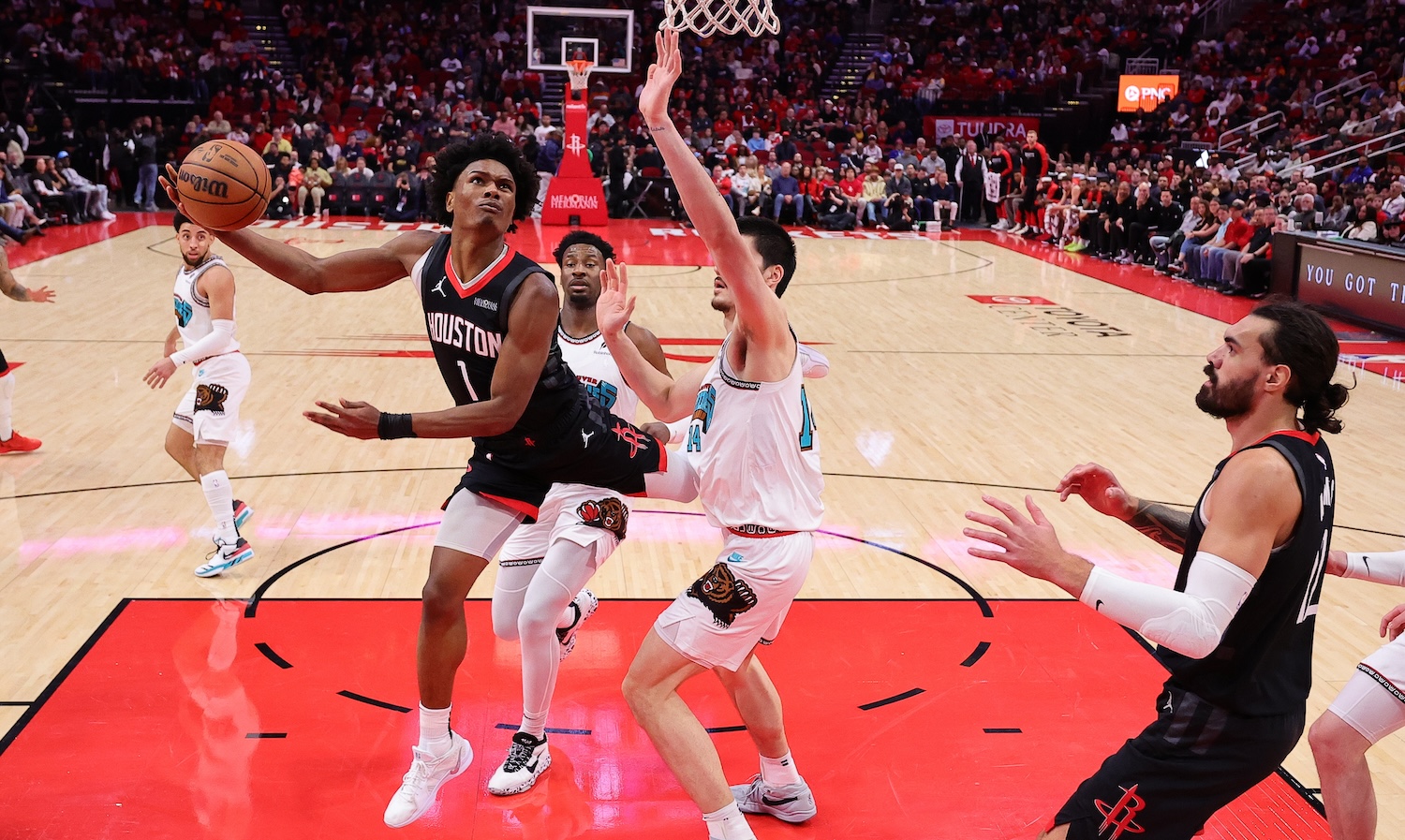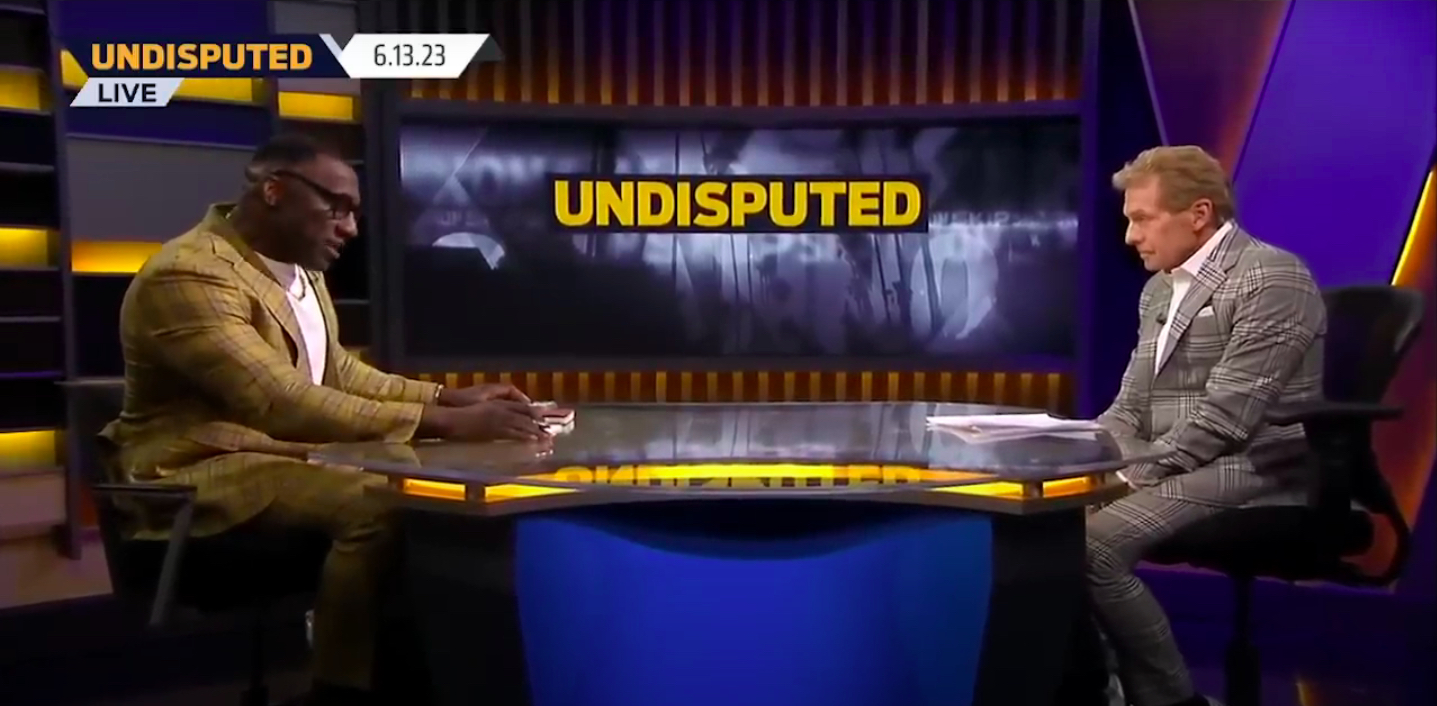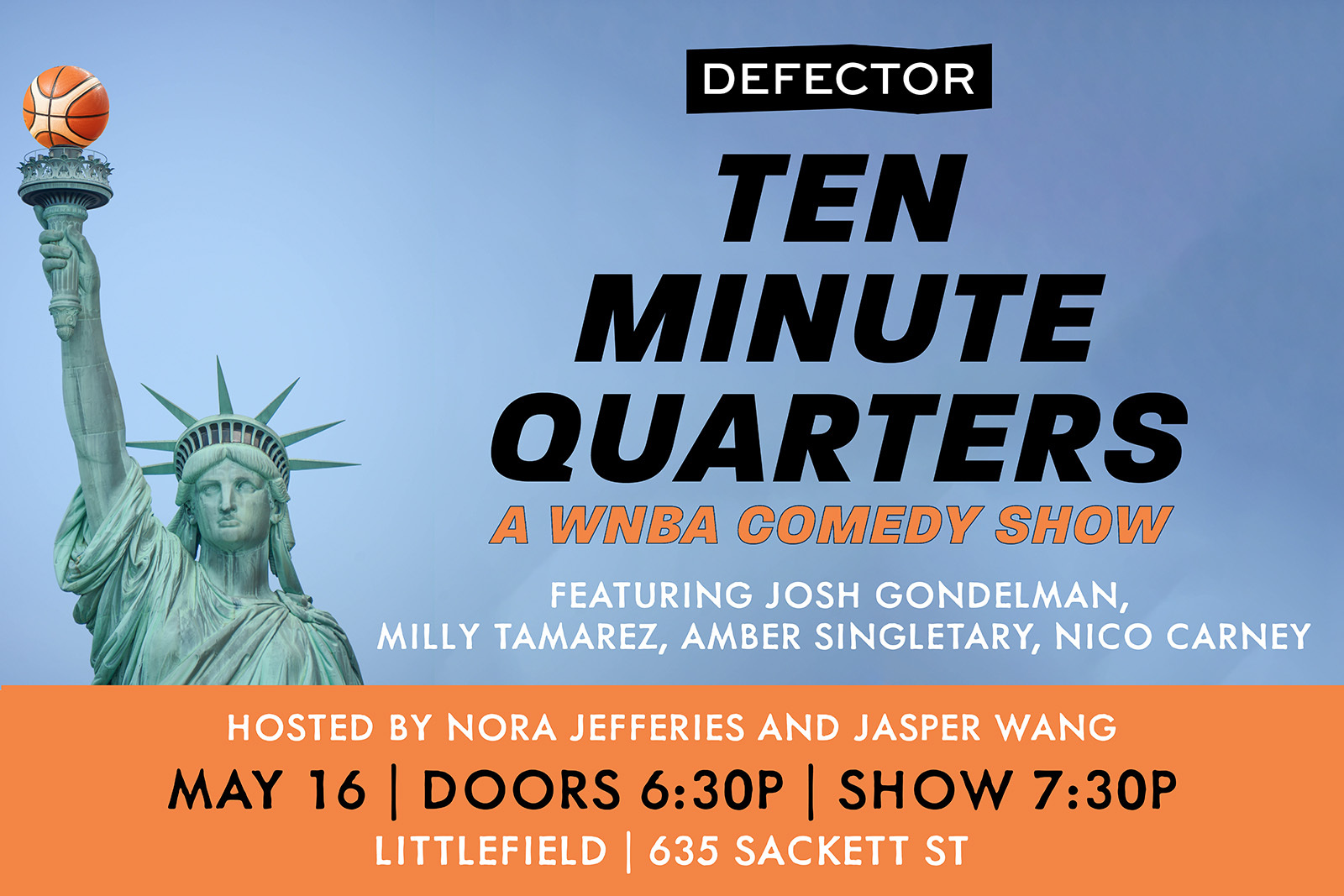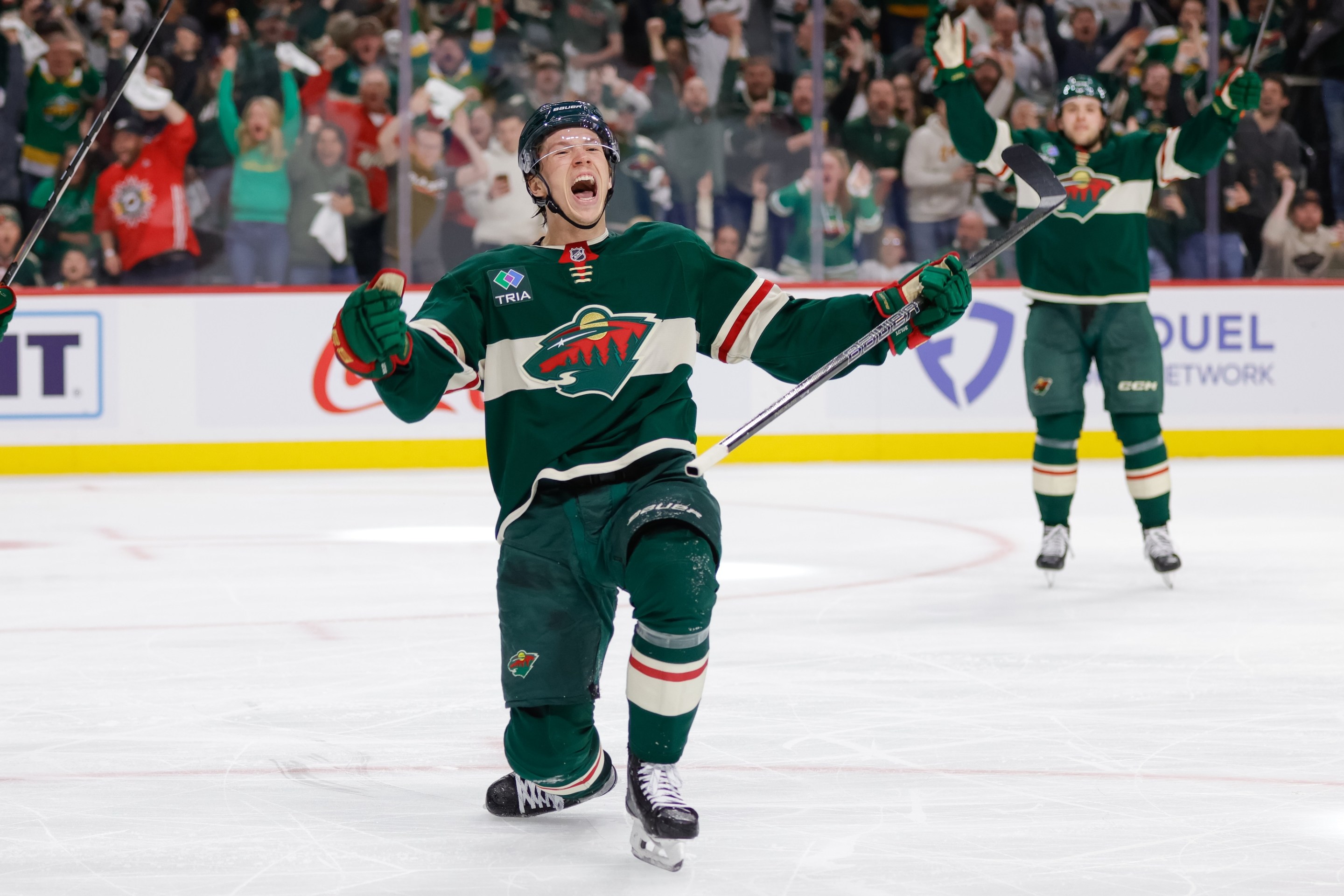On Monday night, I booted up League Pass to watch the end of Pistons-Knicks, and I was treated to a spectacular finish, with Malik Beasley hitting huge threes and talking wild shit while Cade Cunningham cooked two All-NBA defenders en route to another star-making performance. During a replay review, I flipped over to Warriors-Raptors, where I got to see Buddy Hield legitimate a Chris Boucher masterclass with a signature moment of comedic hubris, the sort only he is capable of. After those games wrapped, I locked in for the fourth quarter of Grizzlies-Rockets, the best frame of the night. There was Ja Morant, nailing halfcourt bombs and frying the most athletic player in the NBA; there was Jalen Green, finishing up an efficient 42-point night and continuing his impressive, important January; and there was Amen Thompson, doing his pure destroyer act.
It was an amazing night of basketball, one that, according to a certain discursive strain, does not matter—or at any rate matters less than the question of how many people watched it on TV. NBA ratings squawking is not a novel phenomenon, nor an interesting one. Every year, the season starts while the World Series and football season are in full swing, and so some people watch those things instead of NBA basketball. And because that happens alongside cable television's general slide into the abyss, the numbers wobble. Then those allergic to context form grandiose theories, mistaking the relative viewership decline for an absolute one and linking it to any number of bogeymen: load management, too many three-pointers, or, most cynically of all, wokeness, which is another word for "black people on my television."
If one wants to fight the war on these terms, it's easy to do so: NBA Christmas (long the unofficial opening day for the real-ass basketball season) and the blockbuster Thunder-Cavs contest both did huge numbers. One could also easily look at the 11-year, $76 billion TV deal the league just signed with Amazon, NBC, and ESPN—a deal that David Zaslav wanted to be included in so bad that he tried to sue his way back in—and conclude that even worrying about ratings is inane in the first place.
The pervasiveness of ratings watching is itself more interesting than the phenomenon it seeks to diagnose, and it can largely be explained by shifts within both basketball media and the broader media environment. The dominant posture of expertise within hoops media is GM brain, an executive-friendly way of thinking about the NBA whose adherents refer to players as assets and think the most interesting part of basketball is team-building, not basketball. (If you want to read like 10 million words on this, boy do I have a blog for you.) It is natural for this tendency to over-concern itself with the province of C-Suiters, as that is the group being cosplayed.
The bloodthirsty right-wing zealots, on the other hand, view the NBA as a convenient battleground to fight their proxy war, as it is a black cultural institution with a reasonably active labor force, and declining TV ratings are a supposedly objective and vaguely obscurant way to smuggle through a larger theory of antiblackness; why use all 14 words when three will do? And then there is the larger-order realignment of consumptive and productive online practices towards cynical bag-chasing, one that has no space for the complexities and appreciations of beauty inherent to talking about any art, such as basketball, but absolutely does have the vocabulary and incentive structures to make possible and reward blunt alarmism about ratings in a way that is totally allergic to contextualization, in any form.
The strange, off-putting thing about this epiphenomenon is that arguments against the basketball being played as such, even those made by literally LeBron James, are wrong on their own terms. The game is really good right now, both in terms of large-scale storylines and at the micro level. When Oklahoma City runs the New York–Boston–Cleveland gantlet and beats two out of three, that says a ton about how great the Thunder are; it also illuminates the textural contrasts between each of those three teams' styles of play and OKC's. Isn't it fascinating that the Thunder could turn on the steals-and-dunks machine against Boston and New York in the fourth quarters of those games, but were totally powerless against the force of Evan Mobley and Ty Jerome? What better narrative resolution could you ask for out of a clash between the second- and third-best teams in the West than Houston—an essentially complete, perfectly composed team that has solved every single team-building problem except the hardest one, finding or developing a no-shit best player who can get buckets in the playoffs—winning because Jalen Green had an incredible performance?
As for game at a mechanical level, the three-pointers thing bugs me, because as John Hollinger pointed out in detail, NBA shot breakdowns are basically the same as they were 20 years ago, only with spot-up threes replacing long twos. There are the same number of dunks, but more than that, there is more space for athletic, explosive play. And that is what I see every night.
You can watch Amen Thompson do anything on the court in any context and be amazed. On Tuesday night's slate alone, you can watch Dyson Daniels's fiendish defense, the Nikola Jokic–Russell Westbrook two-man game, and Mobley attacking a renewed Indiana Pacers defense on the short roll. League-wide parity means that nearly every team is playing to win, and even those dedicated to losing can produce ersatz magic. For all the handwringing about homogenizing styles of play—watch the Grizzlies, Warriors, and Cavs play and tell me any of those teams is doing the same stuff as the others—there's incredible innovation happening on the defensive end every night, with players like Thompson, Victor Wembanyama, and Jalen Suggs pushing the art form forward on a nightly basis.
Unless you work for the league, there is no reason to know or care about TV ratings, a useless metric irrelevant to the stuff the league actually cares about. Viewing basketball, or any aesthetic mode that you enjoy, through the prism of its popularity and its discursive position is an over-mediated, alienating way to like something. Related here is the phenomenon of evaluating movies via how much money they make at the box office, or the visual arts via how much money paintings can make for collectors. This mindset is a misapplication of language and analytic orientation.
The business of pro basketball is obviously interesting and worth thinking about critically and taking seriously, but not to the exclusion of considering, with greater weight, the aesthetic value of the game as it is played. If numbers on a spreadsheet are the interesting thing here, you can scratch that itch by reading the business trades or trading crypto. The NBA is an entertainment product; if you want to take the second word in that clause seriously, you have to start with the first. Which is to say: What is interesting about basketball is not stocks, but rather stocks.






